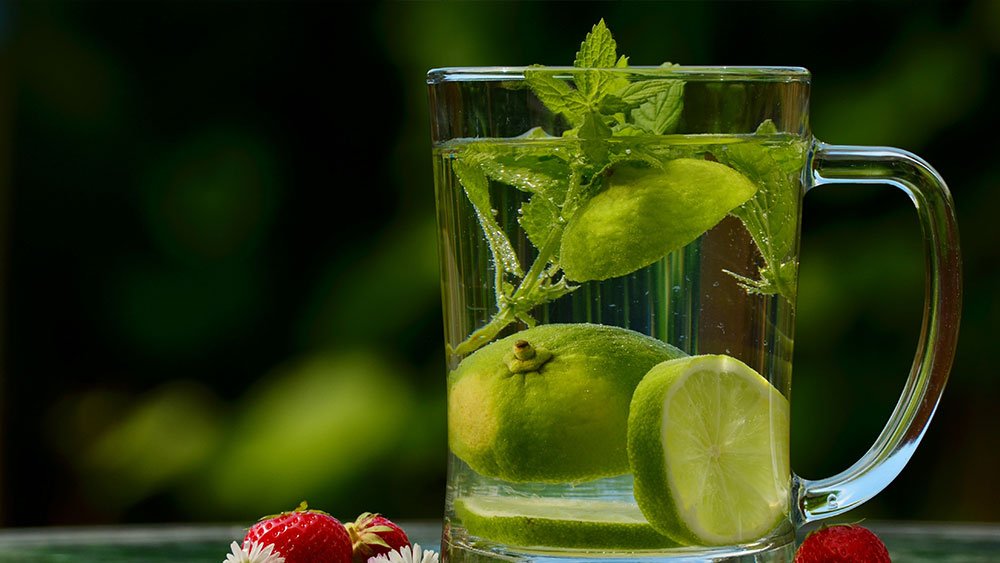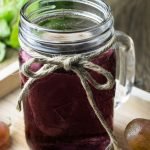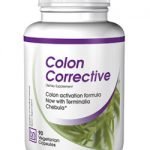What is the difference between a traditional colonic and a colon detox program? Which is better and why? The best way to understand the significant differences between these two approaches is to look at the big picture, overall intestinal health.
Written By: Jon Barron
Lately, many of you have been asking me the difference between a traditional colonic and a colon detox program. Which is better and why? The best way to understand the significant differences between these two approaches is to look at the big picture — Intestinal Health — and in doing so, the answers to many related questions such as “which I prefer and why” and “what makes a formula effective” become clear.
There is an old saying that “death begins in the colon.” This is an oversimplification to be sure but more accurate than not. In fact, the road to health begins with intestinal cleansing and detoxification — no matter what the disease or problem.
Healthy Intestines
Unfortunately, most people confine their understanding of intestinal cleansing to its effect on fecal matter. And even though it is true that cleansing programs do draw old fecal matter out of the colon, limiting the discussion to fecal matter misses the big picture and obscures the differences between colonics and colon detox programs.
Understand, the intestinal tract is essentially a continuous tube from the mouth to the anus, and each part of the tube has a specific function to perform. Among these are:
- Digestion — transferring the nutritional value of that food into the body.
- Processing the waste from that food and eliminating it from the body.
- Serving as a drainpipe for waste produced as a result of metabolic functions within the body itself.
- Serving as a drain for toxic substances absorbed through our lungs and skin, etc.
- Functioning as a first line of defense in the body’s immune system by serving as a home to beneficial bacteria that identify and eliminate viruses and unhealthy bacteria ingested with our food.
What can go wrong if the system is backed-up?
Physically, the colon is simply not designed to store large amounts of old fecal matter. Stores of old fecal matter are not only breeding grounds for harmful bacteria and dangerous parasites, but the extra garbage causes the colon to distend and expand. This causes the walls of the colon to thin out (like blowing up a balloon more and more). As the walls extend out, they press on and compress other organs in the abdominal cavity.
Consider that a sluggish bowel can retain pounds of old toxic and poisonous fecal matter (10-20 pounds is not unusual, and up to 65 pounds has actually been reported). It should be noted that doctors rarely see this accumulated matter during colonoscopies because patients are given purgatives to clean out their intestinal tracts before the colonoscopies, thus removing the evidence — but they do see the effects, the herniations of the colon aka diverticula.
In fact, a clean colon is essential in our detox pipeline. The liver is the main detoxifying organ of the body; it works by filtering out and/or neutralizing dangerous drug residues and poisons from the blood and then passing them out of the body through the colon via the bile duct. But if the colon is plugged, it’s like flushing a toilet clogged with toilet paper; everything backs up. The net result is sickness and disease. In fact, you can’t even begin to cleanse and repair other body systems until you clean out the colon so that the toxic material will have a clean pathway out of the body.
Again, the net result of a backed-up system is sickness and disease including:
- Constipation and the attendant symptoms of self-toxification.
- Diverticular disease (herniations of the colon).
- Hemorrhoids.
- Irritable Bowel Syndrome.
- Ulcerative Colitis.
- Crohn’s Disease.
- Colon/Rectal Cancer.
- Other Related Diseases including: diabetes, Gallstones, Kidney Stones, Gout, Hypertension, Varicose Veins, Rheumatoid Arthritis, Psoriasis, and Obesity.
- Other cleansing treatments (i.e. liver cleanse) are not as effective if the colon isn’t clean.
How can I tell if the system is backed up enough to require a treatment?
A normal bowel movement is soft and unformed. It should break apart when it hits the water — or at least when flushed. This is not to be confused with diarrhea, which is characterized by water.
There has been a great misconception among the public and most medical professionals about how often a normal healthy person should move their bowels. For years, doctors have thought that anywhere between one bowel movement a day and one a week was normal. What we have learned is that it is normal, and necessary, to have one bowel movement a day for each major meal (as opposed to a snack) you ate the day before. If you eat three major meals, you should have three bowel movements the next day. If you don’t, you’re not alone. In fact:
- In the United States, the average frequency of stool passage is just over 3 bowel movements per week.1 “Introduction: What is Constipation?” About Constipation. 08 February 2016. (Accessed 13 Apr 2017. http://www.aboutconstipation.org/what-is-constipation/introduction-what-is-constipation.html
- Individuals with colonic inertia (a condition of the colon when muscles do not work properly, causing constipation) often do not pass a stool for 7-10 days at a time.
The key issue, of course, (aside from organic disease) is lack of fiber in your diet — the more fiber, the faster the transit time of waste through the intestinal tract. Even with all the attention fiber gets in relation to healthy evacuation, it is still MIA in many daily meals. So, let’s look what you’re eating in terms of transit time:
- A beef patty, white flour roll, and French fries have virtually zero fiber — thus slow transit time.
- What’s pizza made of? White flour and cheese. White flour and water is used to make wallpaper paste. And cheese (casein), at one time, was the primary ingredient in Elmer’s Glue (thus Elmer’s picture on the front). Ergo, when you eat pizza, you’re eating wallpaper paste and Elmer’s Glue — a real stick to your “ribs” kind of meal.
If your diet consists of a lot of slow transit time food, then you are essentially clogging your pipes. Once nutrients are absorbed from food, there is no reason to keep the waste in your body. In fact, the longer food stays in your intestines, the more it rots, causing long-term disruptions and toxicity.
Dead men tell no tales
Consider that disruption in the pH of intestinal fluids causes ulcers and disturbs the balance of mucus. In his book, Tissue Cleansing Through Bowel Management, Doctor Bernard Jensen, DC, ND, Ph.D., shared:
- One autopsy revealed a colon to be 9 inches in diameter with a passage through it no larger than a pencil. The rest was caked up layer upon layer of encrusted fecal material. This accumulation can have the consistency of truck tire rubber. It’s that hard and black.
- Another autopsy revealed a stagnant colon to weigh in at an incredible 40 pounds.
Dr. Jensen describes the problem associated with mucoid plaque (thickened intestinal mucus) as: “The heavy mucus coating in the colon thickens and becomes a host of putrefaction. The blood capillaries to the colon begin to pick up the toxins, poisons and noxious debris as it seeps through the bowel wall. All tissues and organs of the body are now taking on toxic substances. Here is the beginning of true autointoxication on a physiological level.”
Thankfully, the story does not end there. Modern awareness of the impact intestinal health has on overall health has created a choice in treatment options. This leads me to the question of the day:
What Is the Difference Between a Colonic and a Colon Detox Program?
The Enema
During an enema, water is inserted into the rectum through a tube causing the emptying of the lower bowel. Enemas are useful for a quick fix — particularly when “temporarily” backed up. However, they only flush loose fecal matter in the lower part of the colon.
The Colonic
A colonic is a type of enema that injects large amounts of water under controlled pressure through the rectum high into the colon for cleansing purposes. Some treatments add things to the water such as peroxide or even herbs. Think of the colonic as a powered enema. It still only captures loose fecal matter, but goes higher into the colon and is more thorough. The bottom line is that colonics do work to flush loose waste and sediment from rectum and lower intestine but they:
- can actually weaken muscles over time.
- don’t draw from bowel pockets.
- don’t draw from tissue.
- flush all bacteria — the good as well as the bad.
- can disrupt natural pH balance.
- it doesn’t happen often, but there are documented cases where inadequately disinfected or sterilized irrigation machines have been linked to bacterial contamination.
If you are so inclined, periodic colonics are not a bad thing. They can definitely improve your health and sense of wellbeing. Regular colonics, on the other hand, may be too much of a good thing.
The Colon Detox Program
An effective colon detoxification program necessitates a two-pronged approach.
- A colon correction formula
- A colon regenerator formula
Colon Correction
A good herbal intestinal corrective provides both cleansing and healing to the entire gastro-intestinal system. It stimulates peristalsis (the muscular movement of the colon). It halts putrefaction and disinfects, soothes, and heals the mucous membrane lining of your entire digestive tract. Entirely herbal, with no harsh, habit-forming chemicals, an effective activating formula will also help improve digestion, relieve gas and cramps, increase the flow of bile (which in turn cleans the gallbladder, bile ducts, and liver), destroy Candida albicans overgrowth and promote a healthy intestinal flora, destroy and expel intestinal parasites, and increase gastro-intestinal circulation. The herbs used in this type of formula are also antibacterial, antiviral and antifungal.
Colon Regeneration
In contrast with the colon corrective formula, a good regenerator is cleansing and soothing. It is used periodically in conjunction with the corrective. The regeneration formula is a strong purifier and intestinal vacuum. It draws old fecal matter off the walls of your colon and out of any bowel pockets. It also works to draw out poisons, toxins, heavy metals such as mercury and lead, and even remove radioactive material such as strontium 90. A good Regenerator will also remove over 2,000 known drug residues. Its natural mucilaginous properties will soften old hardened fecal matter for easy removal and also provide an excellent remedy for any inflammation or irritation in the stomach and intestines. This formula is helpful in irritable bowel syndrome, diverticular disease, and hemorrhoids. And on top of everything else, a good detoxifier will usually eliminate the effects of food poisoning or stomach flu in 20-40 minutes.
The list goes on…
The colon detox program’s two-pronged approach also:
- Helps bring the colon back to life by stimulating the muscle movement of the colon.
- Encourages matter to move forward through the system.
- Halts putrefaction.
- Disinfects.
- Soothes and promotes the healing of the mucous membrane lining of the entire digestive tract.
- Helps stimulate the body to begin the healing and repair of herniated areas.
- Increases the flow of bile to help clean the gallbladder, bile ducts, and liver.
- Promotes healthy intestinal flora.
- Destroys and expels parasites.
- Destroys Candida albicans overgrowth.
- Maintains regularity.
- Decreases straining.
- Speeds up the transit time of feces through the large intestine.
Yeah, but!
Okay, the colon detox program is not all roses and sunshine; you may experience some gas and bloating. But think about it for a moment. If you were to start a car that had been sitting idle in the garage for years, you wouldn’t expect it to start right up. You might have to crank it over several times. It might blow some smoke and backfire several times, maybe even shoot some flames out the tail pipe — but then settle down and begin to purr.
Your bowel is no different.
Gas and bloating are the smoking and backfiring of the bowel. Work through it. Once you have rebuilt your bowel function, your intestinal tract will begin to purr like a well-tuned engine. You may also experience muscular movement, along with occasional cramping and aching, but these effects are minimal if you use a properly designed formula.
What to Look for in an Intestinal Health Program
In a colon corrective, I recommend you look for a formula that contains all organic herbs such as: Cape Aloe, Senna, Cascara Sagrada, Barberry Rootbark, Ginger Root, African Bird Pepper, Fennel, and Terminalia Chebula. (The Cape Aloe gives it strength, while the fennel makes it gentle.)
In a colon regenerator, I recommend you look for a formula that contains all organic herbs such as: Psyllium seeds and husks, Apple Pectin, Montmorillonite Clay, Activated Willow Charcoal, Pau d’arco, Slippery Elm Inner Bark, Marshmallow Root, and Fennel Seed. Each offers a unique benefit to the colon detox program as well as an overall effectiveness not available in a colonic. Since detoxification is the primary focus of this week’s newsletter, let’s look at the ingredients in this formula in a little more detail.
Psyllium seeds and husks are rich in soluble fiber and have long been used to ease constipation and digestive system upset. Studies show that in addition to increasing stool weight, supplements of psyllium seed husk produce stools that are slick and gelatinous.
- Psyllium is unique in contrast with other viscous fibers that are fermented completely in the colon in that it is resistant to fermentation. Researchers observed that this gel provided lubrication that facilitated propulsion of colon contents and produced a stool that was bulkier and more moist than were stools resulting with use of comparable amounts of other bowel-regulating fiber sources. An unfermented gel component of psyllium seed husk promotes laxation as a lubricant in humans.2 Marlett JA, Kajs TM, Fischer MH. “An unfermented gel component of psyllium seed husk promotes laxation as a lubricant in humans.” Am J Clin Nutr. 2000 Sep;72(3):784-9. http://ajcn.nutrition.org/content/72/3/784.long
A number of studies suggest that psyllium may also be effective in lowering cholesterol, promoting weight loss (it makes you feel full), and aiding in the relief of numerous other conditions.
- Psyllium decreased serum glucose and glycosylated hemoglobin significantly in diabetic outpatients.3 Ziai SA, Larijani B, Akhoondzadeh S, et al. “Psyllium decreased serum glucose and glycosylated hemoglobin significantly in diabetic outpatients.” J Ethnopharmacol. 2005 Nov 14;102(2):202-7. http://www.ncbi.nlm.nih.gov/pubmed/16154305
(Note: Psyllium can make tetracycline antibiotics less effective, so consult your doctor for guidance before using psyllium while on a regimen of antibiotics.)
Apple pectin may be used to remove unwanted metals and toxins, lower cholesterol and to help reduce the side effects of radiation therapy. In fact, it was used after Chernobyl to pull radioactive waste from victims.4 Nesterenko VB, Nesterenko AV, Babenko VI, Yerkovich TV, Babenko IV. “Reducing the 137Cs-load in the organism of “Chernobyl” children with apple-pectin.” Swiss Med Wkly. 2004 Jan 10;134(1-2):24-7. http://www.ncbi.nlm.nih.gov/pubmed/14745664 Apple pectin also helps to break down the build up of mucus and binds to various toxic metals — mercury, lead etc. And Apple pectin is also another good source of fiber. It has the ability to form a gel that can bind water and toxins together, thus also bulking the stool and carrying the toxins out of the body.
Montmorillonite clay is medicinal powdered clay derived from deposits of weathered volcanic ash. It is one of the most effective natural intestinal detoxifying agents known, capable of absorbing up to 40 times its weight in fecal matter. It is also capable of absorbing a wide variety of toxins in the intestinal tract. Technically, the clay first adsorbs toxins (heavy metals, free radicals, pesticides), attracting them to its extensive surface area where they adhere like flies to sticky paper. Then it absorbs the toxins, taking them in the way a sponge mops up a kitchen counter mess.
According to the Canadian Journal of Microbiology, montmorillonite can absorb pathogenic viruses, aflatoxin (a mold), and pesticides and herbicides including Paraquat and Roundup.5 Lipson SM, Stotzky G. “Specificity of virus adsorption to clay minerals.” Can J Microbiol. 1985 Jan;31(1):50-3. http://www.ncbi.nlm.nih.gov/pubmed/3986713 The clay is eventually eliminated from the body with the toxins bound to its multiple surfaces.
Montmorillonite clay is, so far, the only mineral found to catalyze the synthesis of RNA polymers (with at least 10 nucleotides) from their individual units. In other words, montmorillonite clay may have played a fundamental role in the creation of life on earth. This just might be a point both creationists and evolutionists can agree on.
Activated willow charcoal does essentially the same thing in your intestinal tract that a charcoal block does in your water filter. It attracts and traps thousands of times its own weight in gases, toxins, food additives and other chemicals. As a side note, it can absorb over 3,000 known drug residues. Willow charcoal is preferred over charcoal from coconut shells.
Pau d’arco (Tabebuia heptaphylla) comes from the rain forests of Brazil and other areas of South America. Pau d’arco works well in the formula because of its proven ability to help control Candida. This amazing herb also nourishes the body’s defense system and helps protect against pathogenic organisms. It has been used for centuries to improve immune function, detoxify, and reduce pain throughout the body — especially in the joints. Research has shown that it contains a natural antibacterial agent, has a healing effect on the entire body, cleanses the blood, and kills viruses. Pau d’arco has been used as a treatment for AIDS, allergies, all infections and inflammations, anemia, asthma, arthritis, arteriosclerosis, as a blood builder, bronchitis, all types of cancer, colitis, cystitis, smoker’s cough, diabetes, eczema, fistulas, gastritis, gonorrhea, hemorrhages, hernias, Hodgkin’s disease, liver disease, leukemia, lupus, multiple sclerosis, osteomyelitis, Parkinson’s disease, polyps, prostatitis, psoriasis, rheumatism, skin cancer, skin sores, spleen infections, snake bites, ulcers, varicose veins, warts, and plain old wounds.
The great demulcent and emollient properties of Marshmallow (root) make it useful in treating inflammation and irritation of the alimentary canal, and of the urinary and respiratory organs. Marshmallow’s mucilage content helps soothe inflamed tissues — not only in the intestinal tract, but also in the lungs making it beneficial in cases of bronchitis and asthma. The active biochemicals in Marshmallow are large carbohydrate (sugar) molecules, which make up the mucilage. This smooth, slippery substance can soothe and protect irritated mucous membranes. Marshmallow has been known to relieve indigestion, kidney problems, urinary tract infections, and even external skin wounds such as boils and abscesses.
Slippery elm bark works with the body to draw out impurities and toxins, assisting with the healing of all body parts. And slippery elm’s coating action soothes the irritated tissues of the intestines, colon, urinary tract, and stomach ulcers. The primary chemical constituents of slippery elm are mucilage (galactose), starch, tannins, calcium, vanadium, and zinc.
Licorice root stimulates the production of digestive fluids and bile, soothes ulcers, helps reduce intestinal inflammation, and supports the healthy function of the kidneys, liver and bladder. Its action in soothing ulcers is unique. Rather than inhibit the release of acid, licorice stimulates the normal defense mechanisms that prevent ulcer formation. Specifically, licorice improves both the quality and quantity of the protective substances that line the intestinal tract; increases the life span of the intestinal cell; and improves blood supply to the intestinal lining.
Fennel is a carminative herb that helps reduce colic, gas, indigestion, intestinal disorders, assimilation, nausea, and flatulence. It also can help break up kidney stones and uric acid in the tissues and is therefore used in treating gout. Fennel (seed) will help clear mucus and phlegm from the lungs and it will also help rid the intestinal tract of mucus. Its tissue cleansing properties also have a cleansing effect on the gallbladder and liver. Fennel is very effective for cancer patients after radiation and chemotherapy. Fennel will help improve digestion and quiet hiccups. This herb will effectively reduce or eliminate intestinal and stomach gas.
And yes — fiber is an important factor in our diet, yet the average person in America has a fiber intake of less than 10 grams a day. For optimum health and to prevent certain forms of cancer (colon or breast) and aid in the prevention of heart disease, you need between 25-30 grams of fiber a day! Flax (stabilized, ground) is one of the highest sources of fiber known. It is also extremely high in beneficial omega-3 fatty acids. Omega-3’s lower high blood cholesterol and triglyceride levels by as much as 25% and 65%. Omega-3’s decrease the probability of a blood clot blocking an artery. They also lower blood pressure, reduce inflammation, and lower insulin requirements in diabetics. Unfortunately, omega-3 fatty acids go rancid very quickly after grinding. That’s why it’s vital to use stabilized ground flax if you are not grinding it fresh yourself on a daily basis. And flax is high in lignans, some of nature’s most powerful anti-tumor bio-chemicals. The fiber in flax (along with the flax lignans) works as a perfect complement to the fiber found in psyllium seed husks.
Regular Maintenance
In the end, colonics offer a quick cleanse and promote a sense of wellbeing, but I still prefer a long-term multi-faceted approach that addresses the big picture.
I recommend a summer and winter liver and blood cleaning and a fall and spring intestinal cleansing combined with a heavy metal detox. Alternating these treatment programs promotes optimal wellness and vitality, plus offsets disease and signs of aging. If it helps get you in the mood, think of the Intestinal Cleansing program (including the colon cleanse and heavy metal detox) as just another natural part of Spring Cleaning. You wouldn’t live in a house with backed-up pipes so don’t live in a body with backed-up pipes.
References
| ↑1 | “Introduction: What is Constipation?” About Constipation. 08 February 2016. (Accessed 13 Apr 2017. http://www.aboutconstipation.org/what-is-constipation/introduction-what-is-constipation.html |
|---|---|
| ↑2 | Marlett JA, Kajs TM, Fischer MH. “An unfermented gel component of psyllium seed husk promotes laxation as a lubricant in humans.” Am J Clin Nutr. 2000 Sep;72(3):784-9. http://ajcn.nutrition.org/content/72/3/784.long |
| ↑3 | Ziai SA, Larijani B, Akhoondzadeh S, et al. “Psyllium decreased serum glucose and glycosylated hemoglobin significantly in diabetic outpatients.” J Ethnopharmacol. 2005 Nov 14;102(2):202-7. http://www.ncbi.nlm.nih.gov/pubmed/16154305 |
| ↑4 | Nesterenko VB, Nesterenko AV, Babenko VI, Yerkovich TV, Babenko IV. “Reducing the 137Cs-load in the organism of “Chernobyl” children with apple-pectin.” Swiss Med Wkly. 2004 Jan 10;134(1-2):24-7. http://www.ncbi.nlm.nih.gov/pubmed/14745664 |
| ↑5 | Lipson SM, Stotzky G. “Specificity of virus adsorption to clay minerals.” Can J Microbiol. 1985 Jan;31(1):50-3. http://www.ncbi.nlm.nih.gov/pubmed/3986713 |












Hi ! I loved your article
Hi ! I loved your article on colon cleansing and the two-progoned approach.
Can you recommend any Brand names with two part approach for the colon ?!
Scroll to the top of this
Scroll to the top of this page, see the left hand navigation on how to do this program and products needed:
Who performs these cleanses?
Who performs these cleanses? Who do I call to schedule an appointment? A gastroenterologist? Please advise.
All of our cleanses are
All of our cleanses are performed at home, and you can follow the directions at our online Detox Center.
I’ve been searching for an
I’ve been searching for an answer to this question for so long and this article is the only one that actually answered clearly and precisely.
Thank you. I appreciate how detailed and informative and might I add intriguing I found it to be.Extremely interesting.
A thousand thanks. .
Innell grant
Thank you for letting us know
Thank you for letting us know!